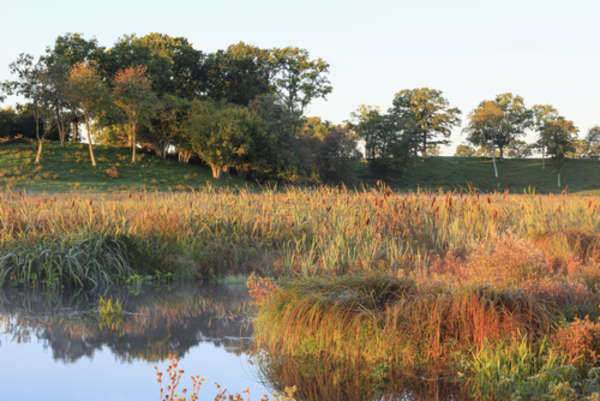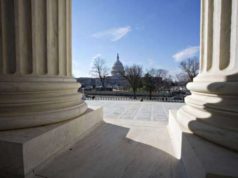
Formed in 1879, The United States Geological Survey (USGS) is a scientific agency of the United States Federal Government. The scientists of the United States Geological Survey (USGS) study the landscape of the nation, including its natural resources and the hazards that threaten it. The agency prides itself on the upkeep of four primary scientific disciplines with regards to geology, geography, biology and hydrology. The United States Geological Survey (USGS) is a research organization that possesses no structural responsibility.
The United States Geological Survey (USGS) employees approximately 9,000 government employees and is headquartered in Reston, Virginia. The United States Geological Survey (USGS) also utilizes major offices in Menlo Park, California and Lakewood, Colorado. The department operates with an annual budget of over $1.1 billion per year.
History of the United States Geological Survey (USGS):
The foundation of the United States Geological Survey (USGS) was prompted by a report from the National Academy of Sciences. The United States Geological Survey (USGS) was created by the United States Congress in March of 1879. The foundation of the agency was charged with the formal classification of public land and the examination of the geological structural, including its mineral resources and products rendered by the national domain. This objected was driven by the need to chart and inventory the sprawling lands added to the United States through the Louisiana Purchase and the Mexican-American War.
Programs of the United States Geological Survey (USGS):
The United States Geological Survey (USGS) is divided into seven primary objectives, with specific programs built for each:
• The Earthquake Hazards Program is responsible for monitoring earthquake activity throughout the United States. The National Earthquake Information Center, which is a part of the United States Geological Survey (USGS) and located in Golden Colorado, detects the magnitude and location of global earthquakes. The United States Geological Survey (USGS) is also responsible for running or supporting an assortment of regional networks in the states under the umbrella of the Advanced National Seismic System. The United States Geological Survey (USGS) informs emergency responders, authorities, and the public (both worldwide and domestic) with regards to significant earthquakes. This particular sub-agency of the United States Geological Survey (USGS)is also responsible for maintaining a long-term library of earthquake data for engineering and scientific research. The agency will also support and conduct research on long-term seismic trends or hazards.
• The United States Geological Survey (USGS) implements the National Geomagnetism Program, which is responsible for monitoring the magnetic field at all magnetic observatories. The agency, subsequent to investigation, distributes magnetometer information in real time
• As of 2005, The United States Geological Survey (USGS) is working to build a National Volcano Early Warning System by bolstering the instrumentation to monitor the 169 volcanoes in the United States. The agency would then establish methods for evaluating and measuring the relative threats posed at each of these locations.
• The United States Geological Survey (USGS) collaborates with the Mexican and Canadian governments—as well as the Commission for Environmental Cooperation—to produce the North American Environmental Atlas. This resource is utilized to track and depict environmental issues to bolster a continental perspective.
• The United States Geological Survey (USGS) operates a stream gaging network for the United States, through the administration of over 7400 stream gages. Through these resources, real-time stream flow data may be observed in real time online.
• The National Climate Change and Wildlife Science Center is responsible for implementing partner-driven science to bolster the understanding of past and present land use developments, alterations and land use forecasts. This agency identifies resources, lands and communities that are most susceptible to adverse impacts of diversions from the local to the global scale.
• Developed in 1962, the Astrogeology Research Program, is involved in lunar, planetary and global exploration.
• The United States Geological Survey, in collaboration with Stanford University, operates the USGS-Stanford Ion Microprobe Laboratory, which is a world-class facility for trace element and geochronology analyses of minerals and other earth materials.
• The United States Geological Survey operates several water related programs, most notably the National Stream flow Information Program and the National Water Quality Assessment Organization. Data procured from these agencies is publicly available by accessing the National Water Information System database.
• The United States Geological Survey (USGS) operates the National Wildlife Health Center, whose stated mission is to serve the United States and its natural resources by offering technical support and sound science for the dissemination of information to promote science-based decisions which ultimately affect the ecosystem and wildlife in general. The National Wildlife Health Center provide information, research, technical assistance, leadership and educational resources on national and international wildlife health issues. The agency’s primary responsibility is to survey wild life and outbreaks that stem from wild-animals in the United States. The United States Geological Survey (USGS) is also responsible for running 17 biological research centers in the United States.
Other Functions of the United States Geological Survey (USGS):
The United States Geological Survey (USGS), which is a civilian federal agency, is responsible for producing a number of national topographic maps which vary in extent and scale. The largest and most widely known topographic series published by the United States Geological Survey is the 1:24,000 scale, quadrangle that is virtually unique to the United States. Each map in this series is bounded by lines of latitude and longitude equally spaced seven and a half minutes apart.
These maps are marked with grid tics and lines that surround the map collar to make it possible to identify locations through graticule measurements of latitude and longitude.






























